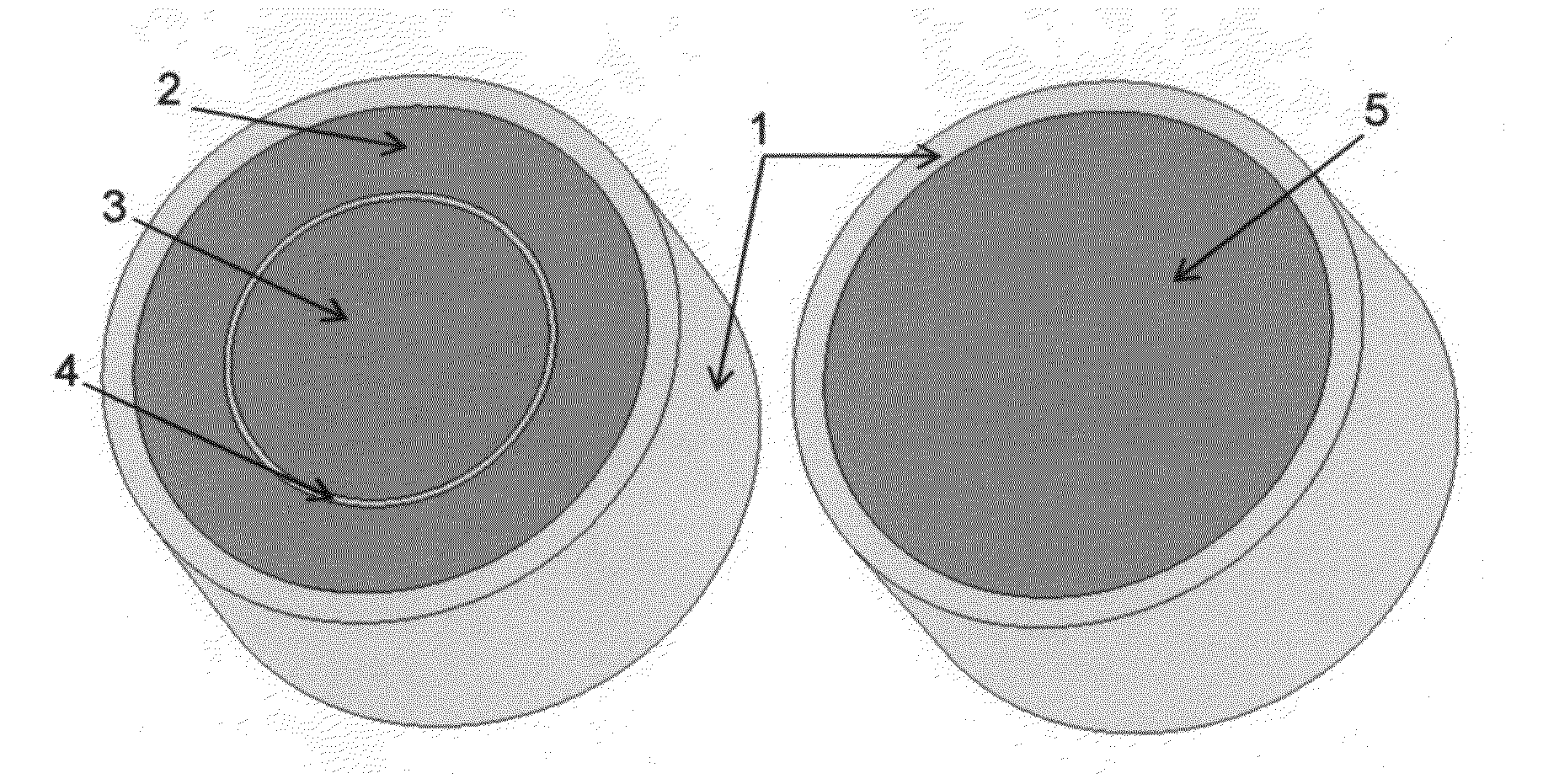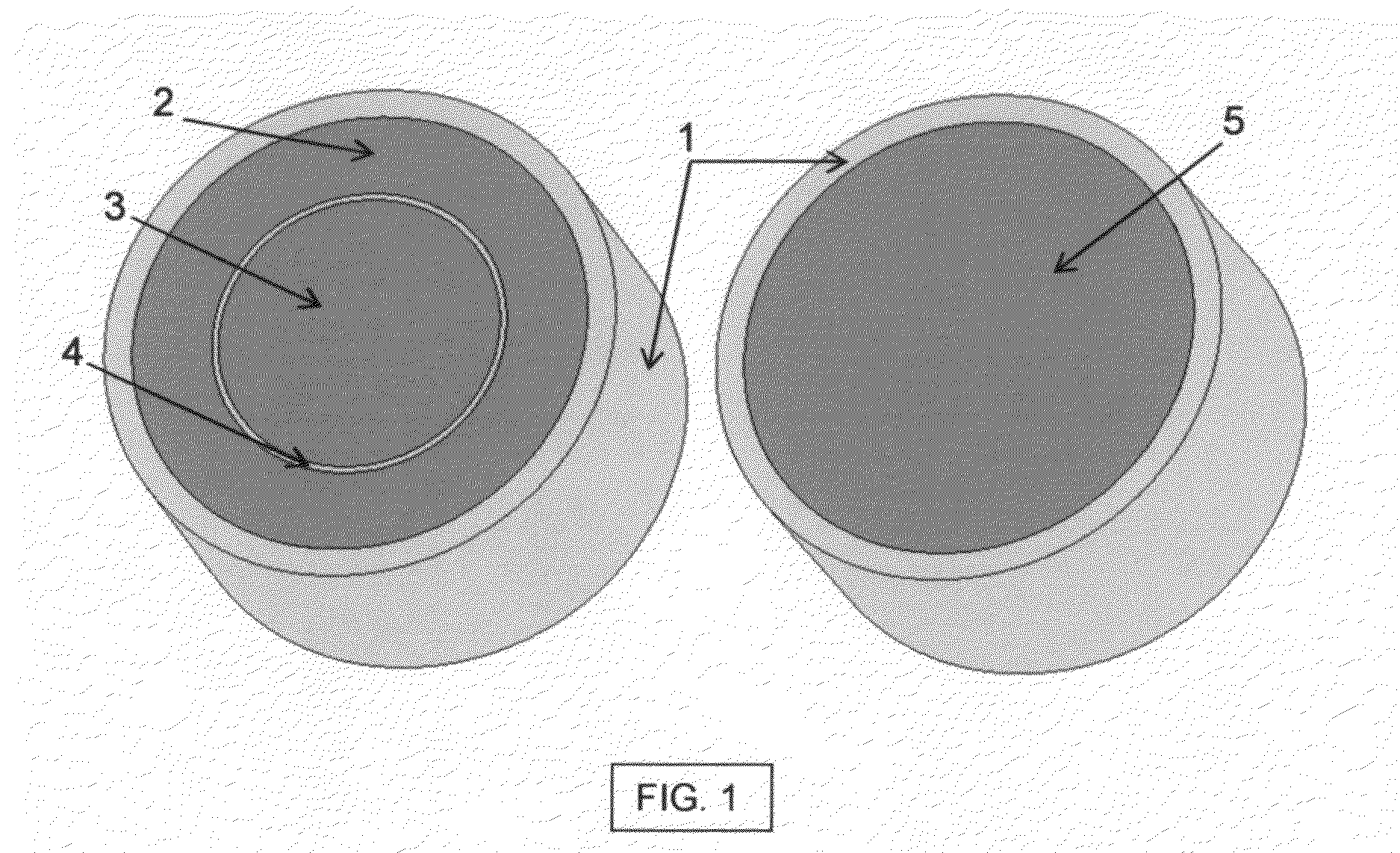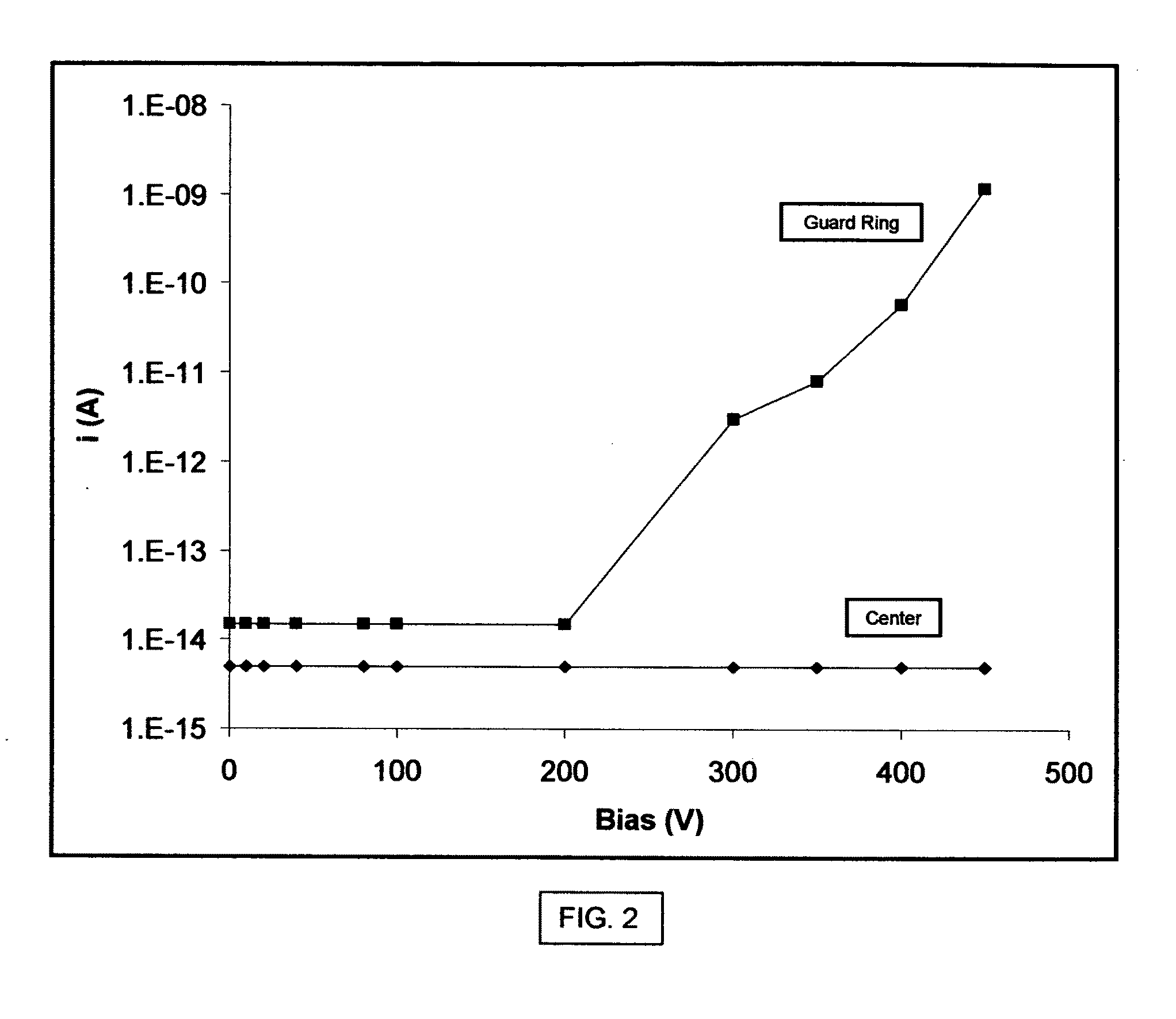Yttrium contacts for germanium semiconductor radiation detectors
a technology of germanium semiconductor and radiation detector, applied in the field of radiation detectors, can solve the problems of affecting the use of germanium semiconductor radiation detectors, unable to reach the 1000 thickness level required for a truly thin particle entrance window, and lithium diffused contacts, so as to improve the contact technology of germanium detectors, improve the effect of germanium detectors, and convenient segmentation
- Summary
- Abstract
- Description
- Claims
- Application Information
AI Technical Summary
Benefits of technology
Problems solved by technology
Method used
Image
Examples
Embodiment Construction
[0015]For illustrative purposes, a representative embodiment of the invention is described hereinafter in the context of a radiation detector. It will be understood, of course, that the utility of the yttrium metal contact on germanium detectors is not limited to the representative embodiment described specifically but extends quite readily to all germanium semiconductor detector embodiments used for a wide variety of applications including, but not limited to, x-ray detection, gamma-ray detection, charged particle detection, gamma-ray imaging, and other fields where a thin germanium detector contact or a contact that can be segmented into multiple electrodes is preferred. This is quite apparent as all germanium semiconductor radiation detectors operated in single-photon counting mode utilize detector contacts to serve as hole-barrier contacts, electron-barrier contacts, or both hole- and electron-barrier contacts. It is impossible to operate such a germanium semiconductor detector ...
PUM
 Login to View More
Login to View More Abstract
Description
Claims
Application Information
 Login to View More
Login to View More - R&D
- Intellectual Property
- Life Sciences
- Materials
- Tech Scout
- Unparalleled Data Quality
- Higher Quality Content
- 60% Fewer Hallucinations
Browse by: Latest US Patents, China's latest patents, Technical Efficacy Thesaurus, Application Domain, Technology Topic, Popular Technical Reports.
© 2025 PatSnap. All rights reserved.Legal|Privacy policy|Modern Slavery Act Transparency Statement|Sitemap|About US| Contact US: help@patsnap.com



